From vibrations in the air to electrical signals firing in the brain
In this article, we will go through the anatomy of the ear, and the function of the different parts.
We will include information on:
- A sound’s journey – In air to the brain
- How we locate sound – sound localization
- How we analyze sound and why we like loud music
- Sound perception – volume and pitch
- Hearing protection
We will look at how we interpret the sounds that enter our ears and the importance of protecting them. Let’s get started.
Loud and Clear
For the music lover, the ability to hear and enjoy music is one of the greatest experiences in the world. It’s the constant companion throughout our entire lives. But how does the hearing mechanism work?
All sound is vibration, molecules in a medium are set in motion, exciting the particles in their surroundings. As sound disperses it comes in contact with various objects, and one of them is us, our bodies, and more importantly our ears.
Once there, a whole series of truly remarkable processes and transformations occur. The level of detail that can be gathered by listening is astounding.
Binaural Magic – How Does Sound Travel
How sound operates in the air is the same, or analogous to how the ear processes sound.
When a sound is produced in the air, it causes compression in the particles around that source, they are squashed together. After which, they are pushed apart, causing rarefaction.
If all this sounds a bit technical, the graphic below from Dr. Daniel A. Russell demonstrates what’s happening.
As an air molecule or particle gets excited by a sound, it moves back and forward in its own area, interacting (compression and rarefaction) with other particles.
The particles themselves don’t move through the air, but their motion creates a wave that transfers this energy through the air.
It is this wave that eventually arrives at the outer part of our ears. It is collected and directed through the ear, and onto our brains for processing. Assuming your ears are in good working condition, if the sound is music, the result is an almost perfect recreation of the source, in all its complexity.
The Outer Ear
The first port of call for any arriving sound is the outer ear, the pinna (or auricle), and as we have 2 our pinnae. In common parlance, these ARE our ears, the 2 fleshy things hanging off our heads.
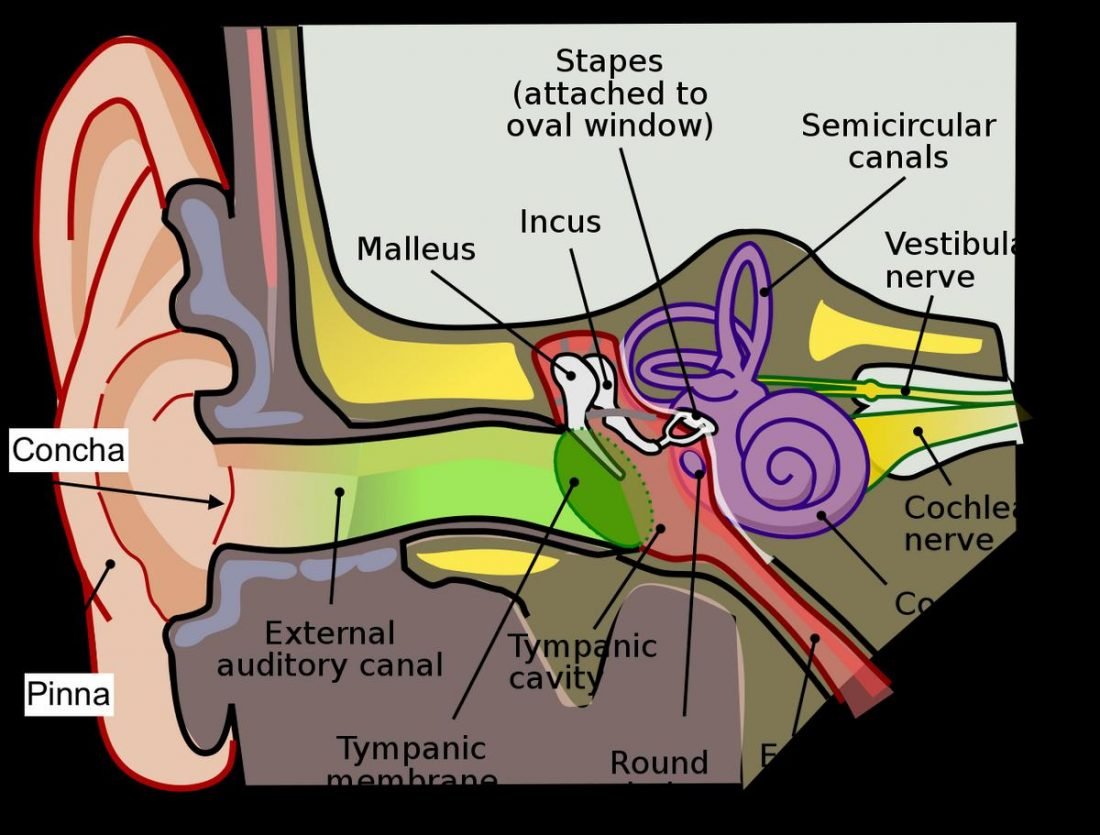
The pinna has a very complex shape, fulls of grooves, ridges, and valleys. Like a fingerprint, everyone is unique.
Sound Localization
The first function of our pinnae is to help with sound localization, they help us figure out where a sound is coming. This may seem like a simple task, but it is, in fact, a very complex process.
Each pinna filters the arriving sound. If a sound is being generated in the horizontal plane (also known as ‘azimuth’, see image), anywhere from directly in front, to directly opposite our ears, a limited amount of filtering is occurring.
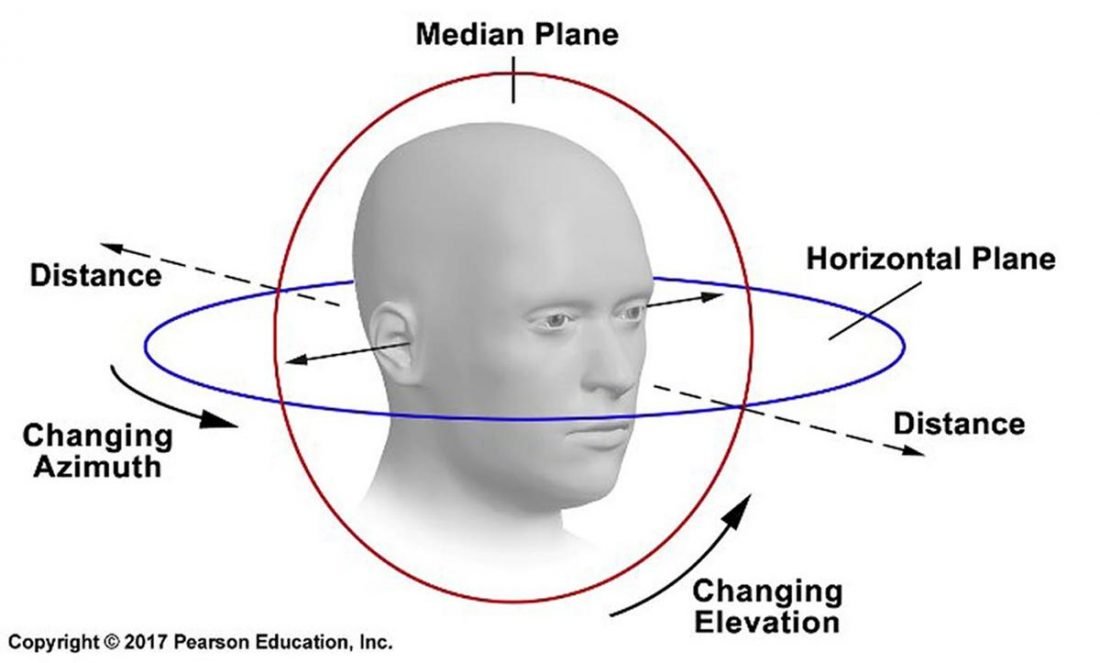
Some filtering occurs due to our heads (or head-related transfer function, HRTF). As an example, if a sound is coming from our left-hand side, it has to travel around the head in order to get to our right ear.
If someone is talking to you and they cover their mouth, the sound becomes filtered, with less high-frequency content, it gets duller. The same happens with your head, so the sound arriving at the right ear is more filtered, duller than the sound arriving more directly to the left ear.
If the source of a sound then travels further, going behind our ears, both pinna filter the sound.
Pinna Filtering
The hole in our pinna leading to the ear canal is known as the concha. When sound is arriving from in front, the grooves, ridges, and valleys on our pinnae direct the sound to the concha.
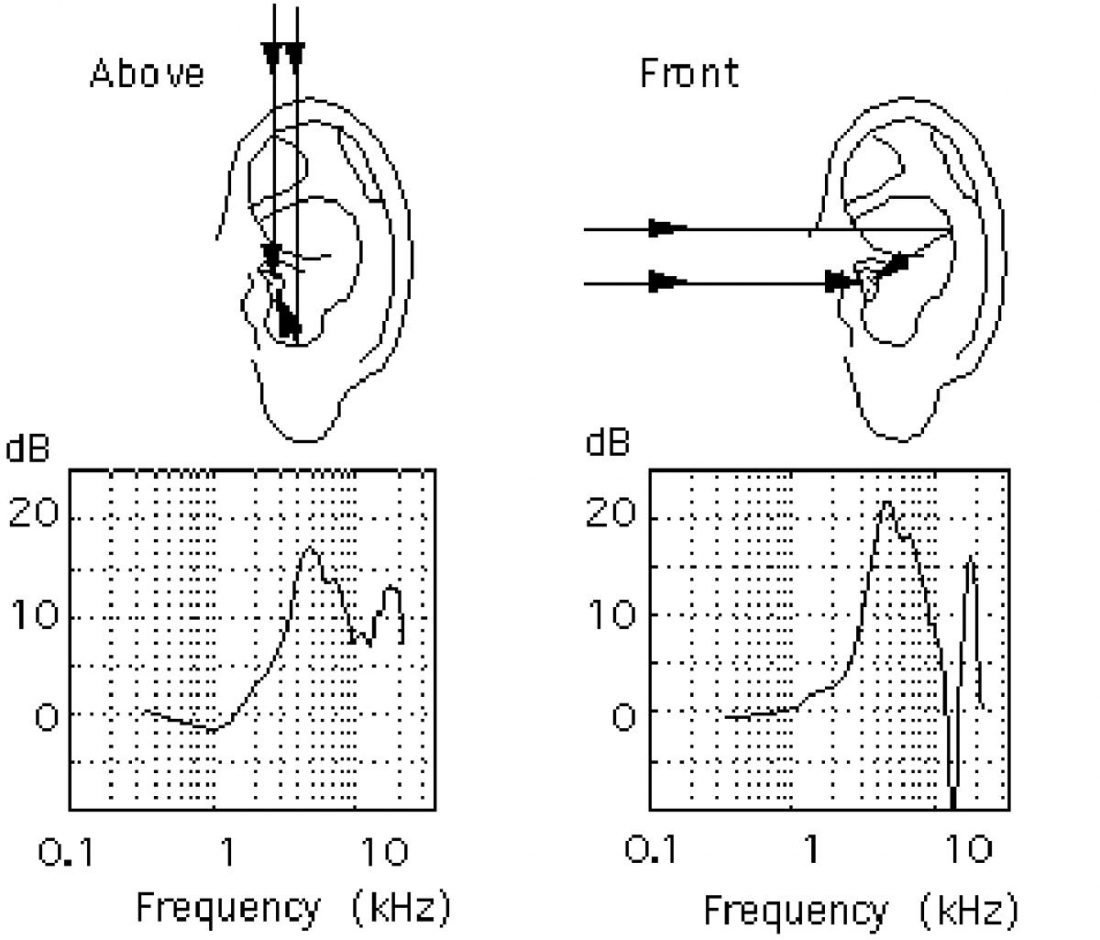
When the sound is coming from behind, the direct sound is being filtered as it reflects off the back of our ears. What we hear is a mix of filtered and indirect sound, and this is a cue, or indicator that tells us when a sound is moving around us or coming from behind.
Armed with this knowledge, sound designers and equipment manufacturers can manipulate audio in the stereo and surround fields.
By using an equalizer (EQ), or more sophisticated techniques, by altering the frequency content of the different channels, sound will be perceived as coming from different directions.
In terms of your music listening equipment, it is an important reason why both channels on your speakers and headphones should be operating perfectly. Any issues become quickly apparent due to the sensitivity of the ear.
Interaural Time and Level Differences
Another way that the outer ear helps with sound localization is in measuring the differences in the level (loudness or intensity) and timing arriving at the ears.
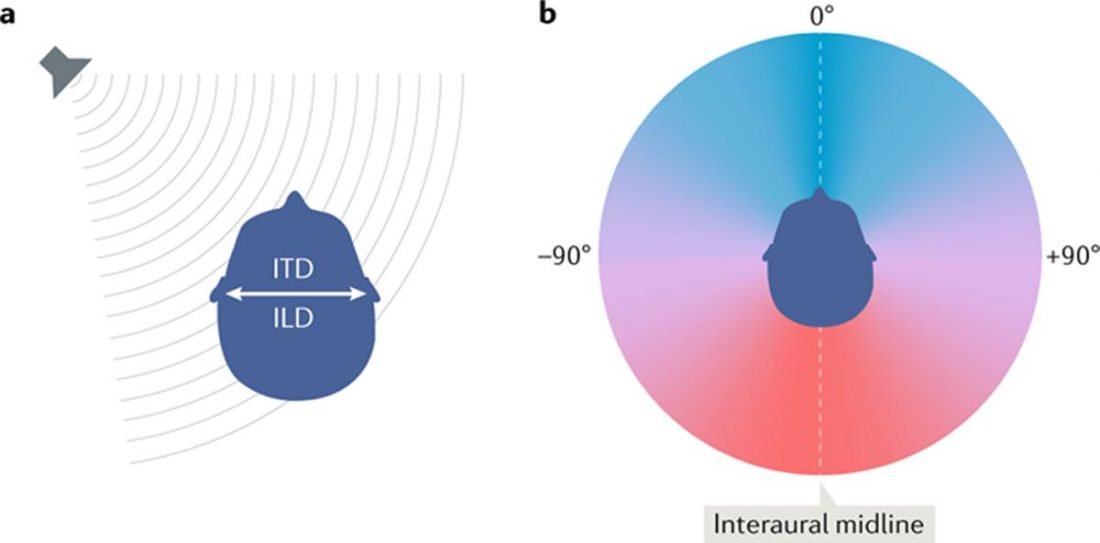
Differences in level are referred to as the interaural level difference (ILD), also known as interaural intensity difference (ILD). Differences in timing are known as the interaural time difference.
These differences can be very subtle, but then again, everything about the hearing system is subtle. You may not have come across these terms, but you have no doubt had the occasion to use them.
In order to help figure out where a sound is coming from, you turn your head left or right, or even tilt it at an angle. In doing so you are adjusting these time and level differences, after which you will orientate your head to directly face the source of the sound, thus identifying its location.
Even without moving our heads, the differences in timing and volume allow us to approximate directionality.
As with the filtering of sound, musicians, sound and audio engineers use this knowledge to spatialize the playback of music.
Down The Rabbit Hole
Once the sound hits the pinna, it is directed down the ear canal, also known as the auditory canal.
This canal doesn’t just function as a path to the middle ear. Due to its length, the concha (the opening in the pinna), and that fact that it is closed at the other end due to the eardrum if forms a resonant cavity.
Like any closed tube (imagine blowing across the top of a bottle) the size of the tube and its internal capacity affect the frequency or pitch it resonates at.
In humans, this frequency range is between 2000 – 5000Hz. The ear canal naturally resonates in this frequency range, amplifying frequencies residing in this range.
This is particularly useful for understanding speech as consonant sounds in the voice, such as k, p, s, t, are found in this range.
The Middle Ear
This is the part of the ear responsible for mechanical action and energy transfer. Once sound travels down the ear canal the first part of the middle it encounters is the eardrum or tympanic membrane.
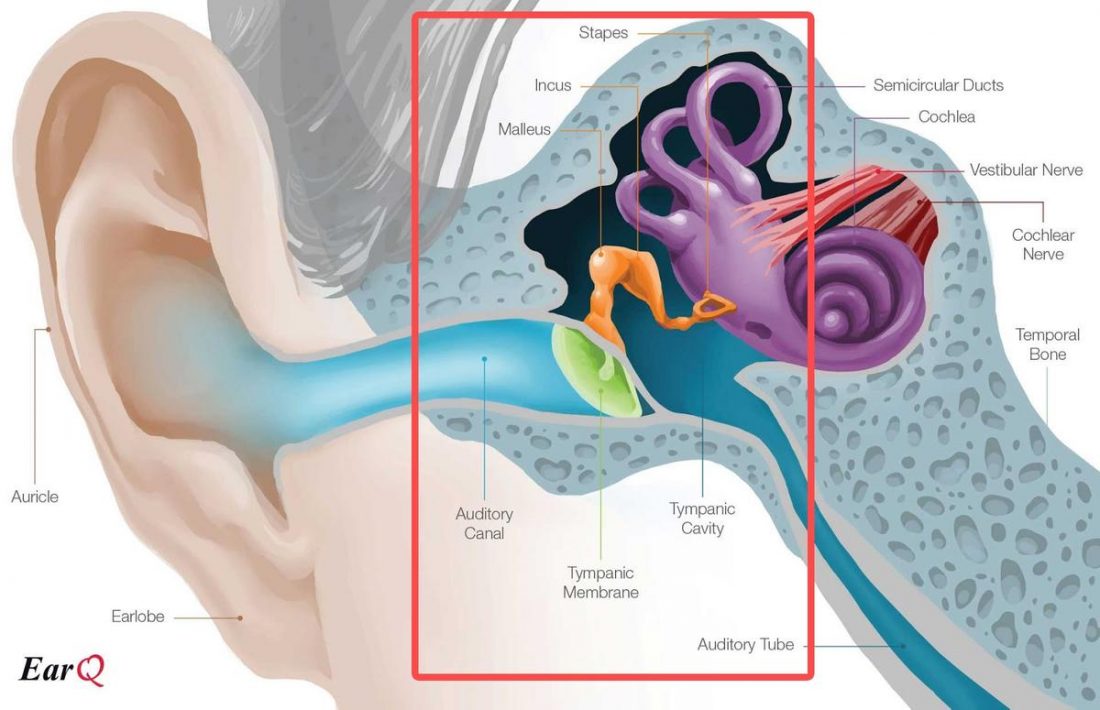
The analogy of a drum is useful. When sound hits the eardrum, it vibrates, like a stick hitting a drum skin.
In an actual drum, the sound of the skin is amplified by the resonant shell the skin is attached to. In the eardrum, the membrane is attached to 3 connected bones. It is these bones that receive the energy the eardrum is creating when it vibrates, and transfers it on to the inner ear.
These bones are called the malleus, incus, and stapes, better known as the hammer, anvil, and stirrup, because of their resemblance to those objects. Collectively, these bones are known as the ossicles.
The middle ear has 2 jobs:
- Amplify the incoming sound
- Acoustic reflex
The Amp Inside Our Head
The first job of the middle ear is to amplify the incoming sound.
The malleus, or hammer, is the bone that is connected to the eardrum, and the incus, or anvil, is attached to the hammer. Together they function like a piston in an engine. The anvil is attached to the stirrup, which in turn is connected to the oval window, part of the inner ear.
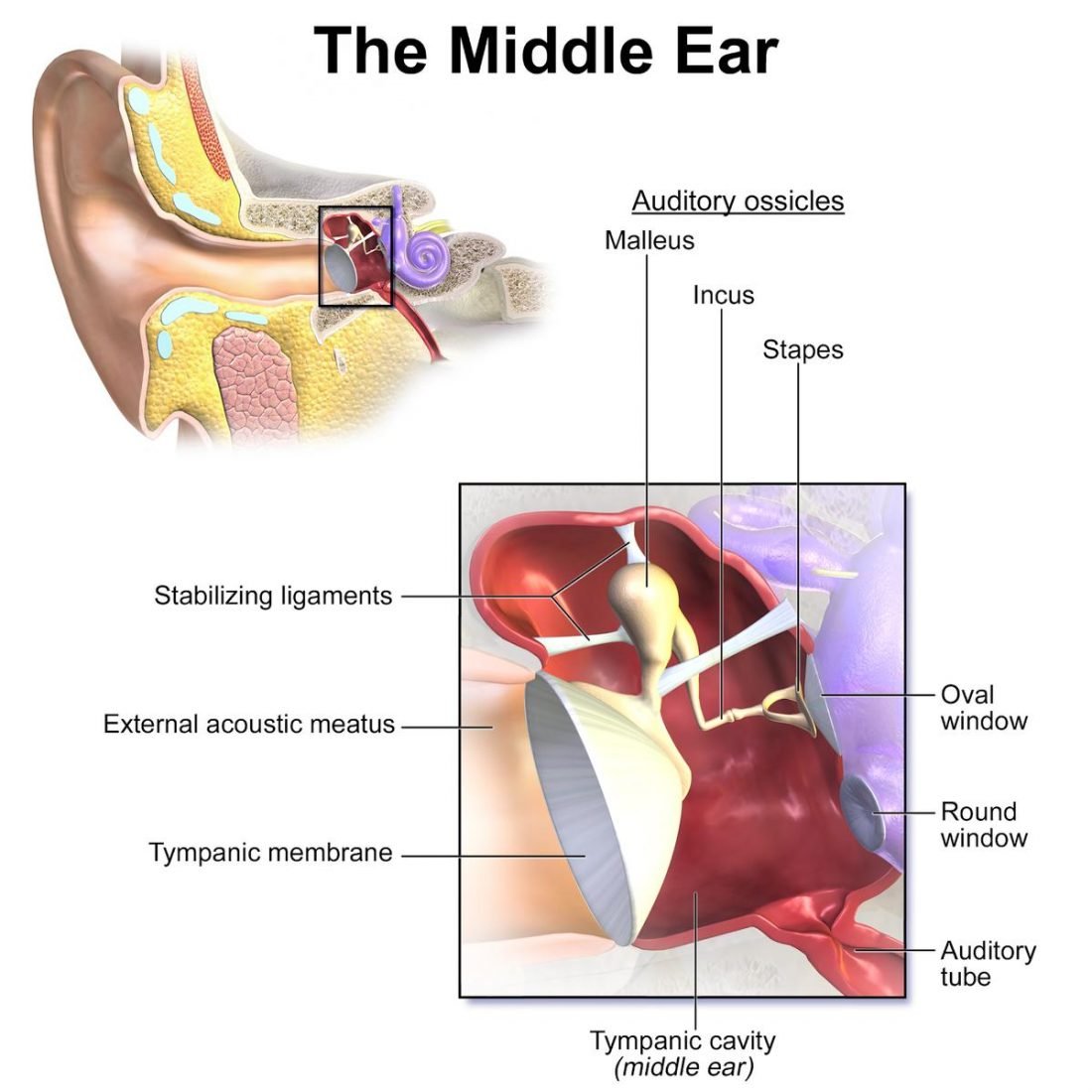
While the outer and middle ear operates in air, the inner ear is encased in liquid. The eardrum has a larger surface compared to the oval window that it is attached to.
The effect of these differences is that there is less resistance to movement on the oval window. It converts the sound received from the eardrum to greater energy, amplifying the sound.
Acoustic Reflex
The second job of the inner ear is that it attempts to protect the hearing system from loud sounds and damage. This is referred to as acoustic reflex.
When confronted with sustained loud sounds, 2 muscles, the stapedius muscle, and the tensor tympani muscle swing into action in an attempt to protect the ear.
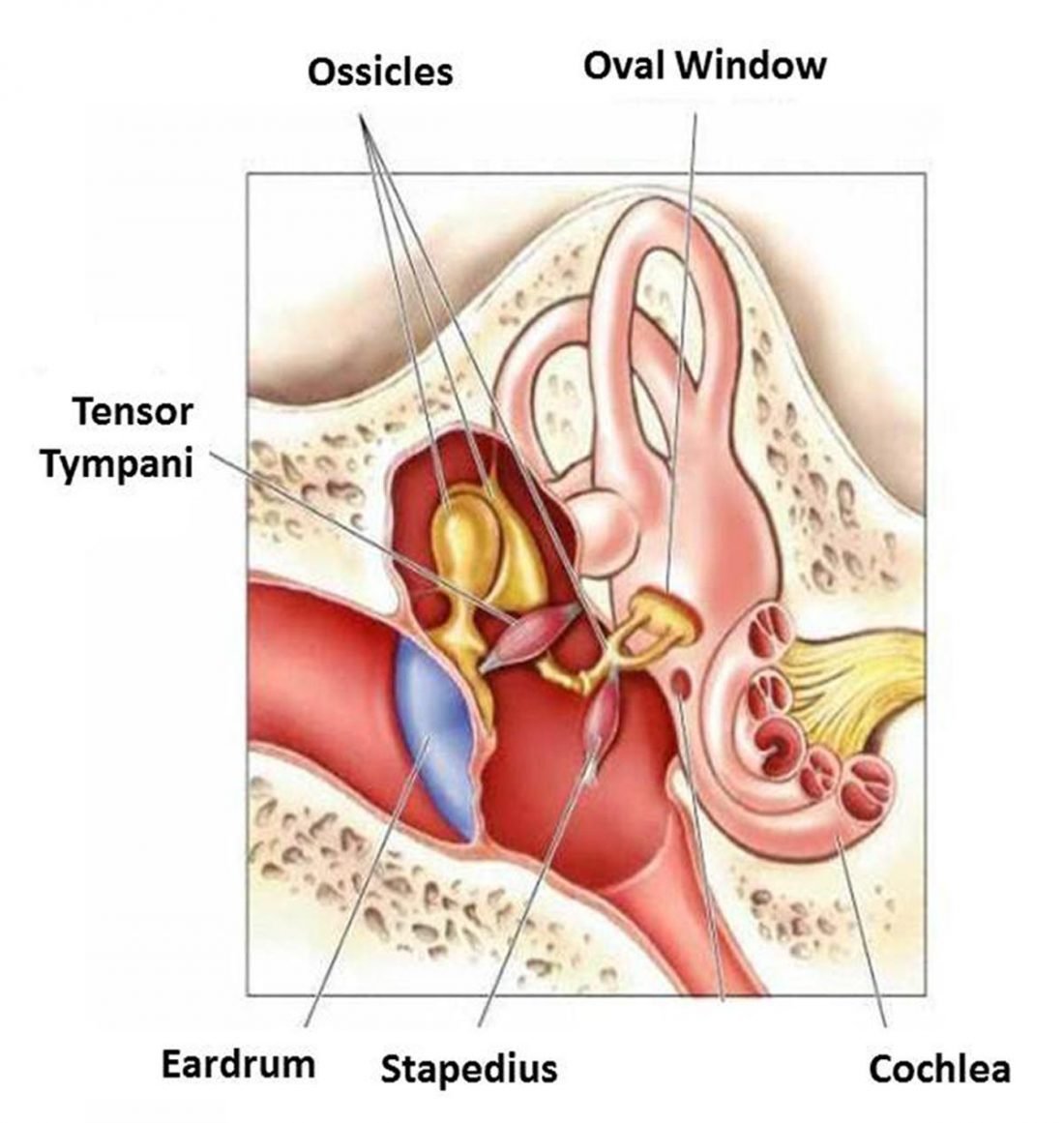
The tensor tympani muscle restricts the movement of the eardrum to lower the vibration and transfer of energy.
The stapedius muscle moves the stirrup back from the oval window to reduce the energy being transferred to the inner ear.
Like all muscles over time it weakens and becomes less effective as we age. Thus, the older you get the less capable your middle ear is at reducing excessive volume and protecting the ear inner from damage.
The acoustic reflex is effective at fighting short amounts of sustained loudness.
Acoustic reflex is not effective against sudden impacts such as loud explosions, or sudden bursts of noise. Its response time is not quick enough to catch the fast transient, or onset, of the initial blast.
The Inner Ear
When you start to discover how the ear works, it gets more mysterious the further you travel inwards. The outer and middle are already amazing in their design, and the functions they carry out.
With the ear, everything is on a small scale, yet the results are outstanding and shape our perception and understanding of the world we live in.
When it comes to the inner ear, things start to get really strange, almost science fiction. Until now, sound, and all the functions of the ear have been occurring in air. Now we enter into liquid.
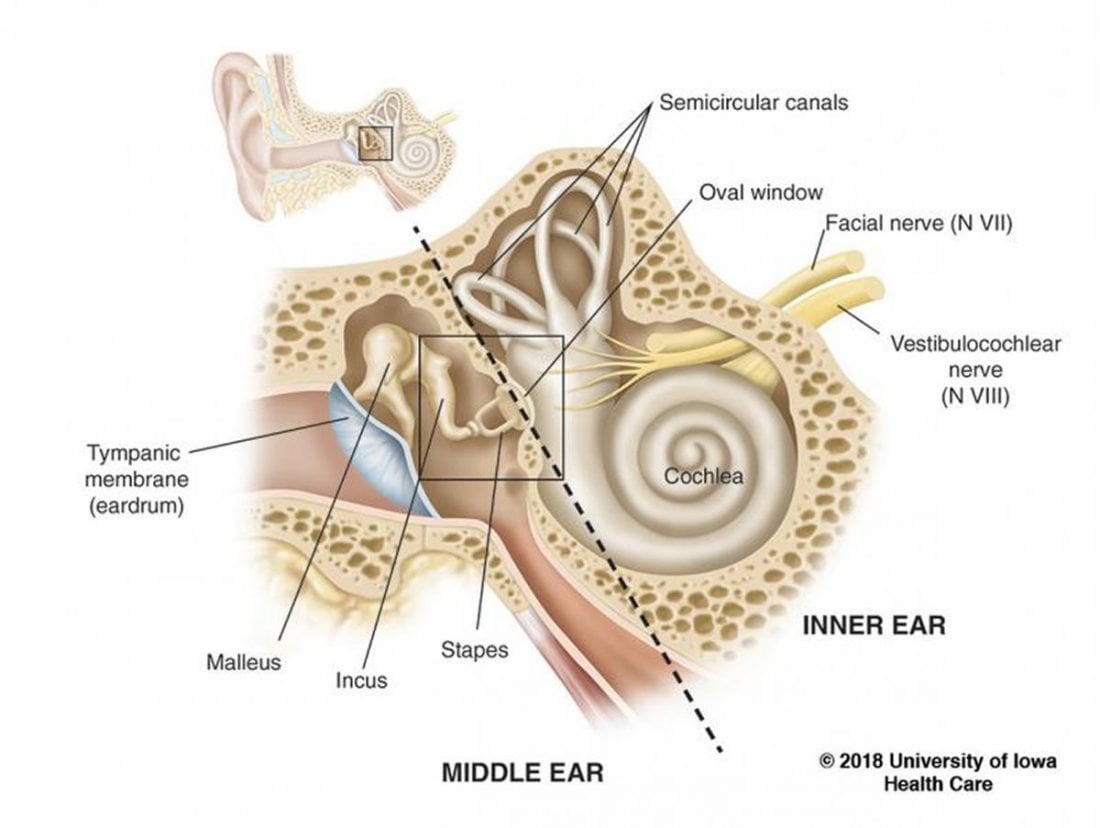
Sound is transmitted to the inner from the stirrup, which is attached to the oval window. The oval window is part of the Cochlea, a tube coiled into a spiral, that resembles a snail.
As the stirrup moves with its piston-like action moving the oval window in and out, it displaces the liquid within the cochlea.
Frequency Analysis
Waves buildup inside the cochlea, which displace the basilar membrane. The basilar membrane’s function is to analyze the frequency of the sounds entering the inner ear.
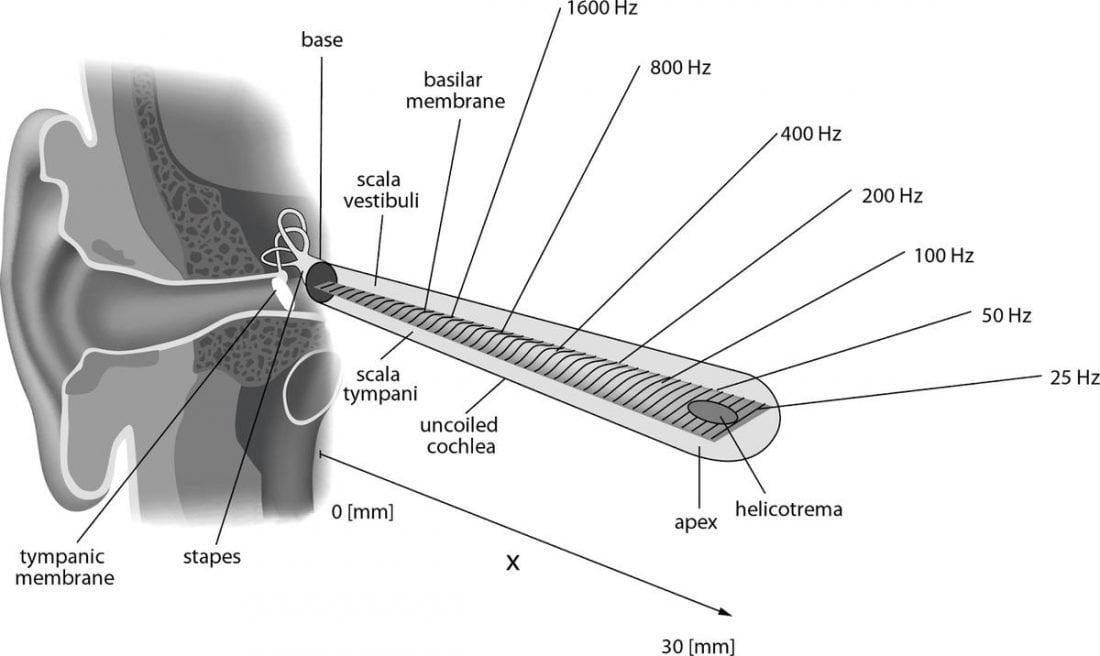
It is narrow and thin at the base of the cochlea, becoming wider and thicker along its length to the apex.
An analogy can be made to instruments in the orchestra. Small instruments with thinner strings such as violins produce the highest frequency. The finer the string and body, the easier it vibrates the resonates.
With an instrument such as the double bass, with its thick strings, and large body. It is responsible for the lowest notes in the orchestra.
The section that analyzes high frequencies is the closet to the stirrup of the middle ear. This receives the most energy when excessive volume is received. As a result, this is the frequency that more susceptible to damage.
Hear a Pin Drop
The basilar membrane is lined with tiny hair cells along its length. When a sound of a particular frequency is received, the hair cells in that area become excited, or bent, and this movement gets converted into nerve firings.
It is at this stage, sound, that originated in air, which got converted into mechanical energy, after which a frequency analysis was carried out, and this information was converted to an electrical signal, travels down the auditory nerve (part of the vestibulocochlear nerve) and to the brain to be interpreted as sound. Quite a journey.
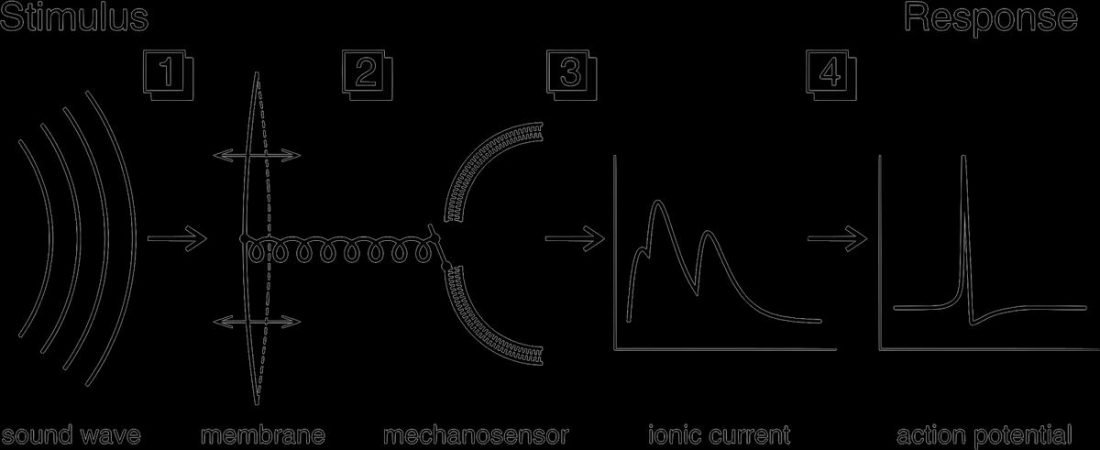
Now that we have covered the anatomy and function of the ear, let’s look at how we interpret the pitch, or frequency of the sounds we hear, and the loudness, or amplitude of these signals.
Equal Loudness
As amazing as the hearing system it is, it’s not perfect. We don’t hear all frequencies at the same volume.
When our ears are tested using tones from 20Hz up to 20,000Hz, measurements are taken of when we perceive each tone to be at equal loudness. The result is an equal loudness curve.
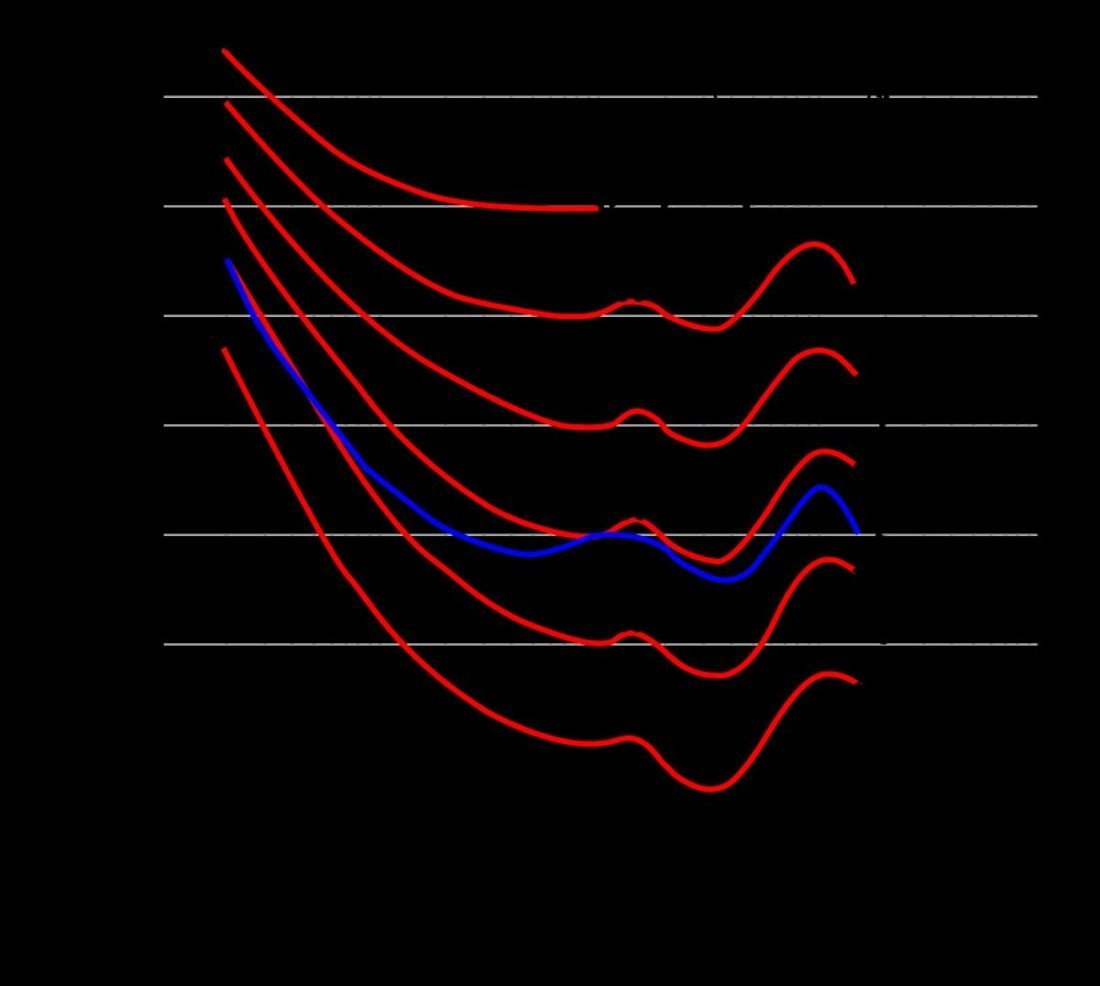
When you are present with your results, there’s no need to freak out. You are the same as every other human. You will continue to hear music in exactly the same way as before.
One thing it does explain is why we enjoy listening to music at high volumes. Looking at the graph you will notice the response becomes more linear, or straighter at higher dB SPL levels, the Y-axis. This relates to loudness.
Volume levels, or sound pressure levels (SPL) are measured in dB SPL. This is a scale that relates to how we hear sound levels, or volume in air.
At louder volumes, we hear the frequency range more evenly. This is most noted in the lows and highs. Areas where our ears are less sensitive. When we want to feel the bass, we reach for that volume knob.
Go With a Smile
There is an alternate way to get this sound at lower volumes, equalization, adjusting the frequency balance. You may have come across a V-shaped sound signature.
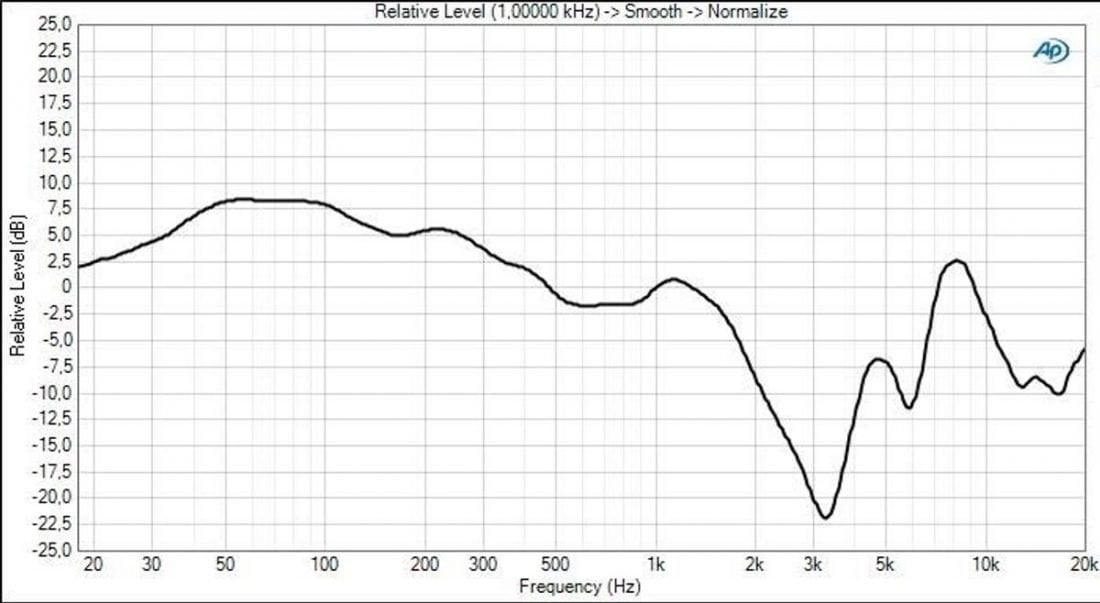
If you compare the equal loudness, and V-shaped curves you will see a pattern. The V-shaped sound signature compensates for how we hear. The equal loudness curves show that we are most sensitive around 3kHz.
We showed earlier that this a result of ear canal resonance in the outer ear. So the V-shaped curve takes this, and other factors into account. So the 3kHz range in not boosted, while boosting the lows and highs, where we are less sensitive.
The effect of this allows us to enjoy a full frequency mix when listening to music at lower volumes.
Pitch Perception
Pitch is how we perceive frequency. Pitch is subjective, few people other than classically trained musicians have perfect pitch, the ability to hear a note and name its pitch, C, D, E etc.
Even fewer people can hear a sound, such a pure frequency, a sine wave, and say what frequency it is. Some sound engineers could approximate the value or range, but not the exact value.
We also perceive pitch logarithmically. To demonstrate this, if we are presented with a frequency of 100Hz, and then double the frequency to 200Hz, we get a pitch an octave higher. An octave is a musical term meaning a doubling of the pitch.
If we were then presented with a frequency of 1000Hz, in order to hear a note an octave higher we again need to double the frequency. This time it takes a jump of 1000Hz, to 2000Hz, to hear the same difference.
Tip the Scales
This demonstrates that our ears are more sensitive to frequency changes at higher values. When we are making an adjustment to the frequency balance of music, whether we are a sound engineer, or just using the graphic equalizer on our hi-fi, we use a logarithmic scale.


In the first image, using the logarithmic scale, we see the value of the ranges increase in the x-axis, the frequency axis, as the values increase. This reflects how we hear and makes the most musical sense to us.
The 2nd image uses a linear scale. Both images show the same piece of music. As the values increase on the x-axis the range of values remains constant.
If this was a graphic equalizer, most of the controls would be useless, while the ones that did affect the sound would not offer enough control.
All the information is bunched together on the left-hand side. No useful information can be gathered from this.
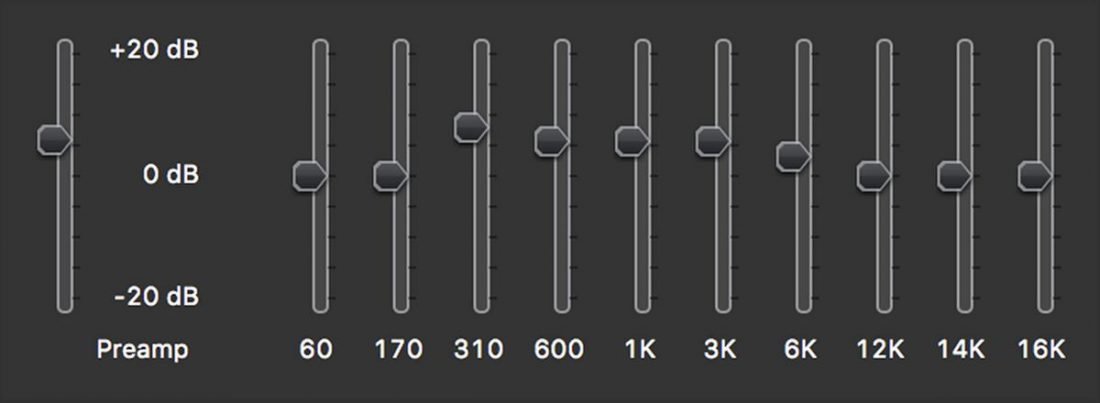
Safety
Now that we know how everything works we can discuss health and safety. Hearing damage occurs quite easily, so this will be a sobering section! Modern listening habits ignore statistical information. This will all be laid out clearly here.
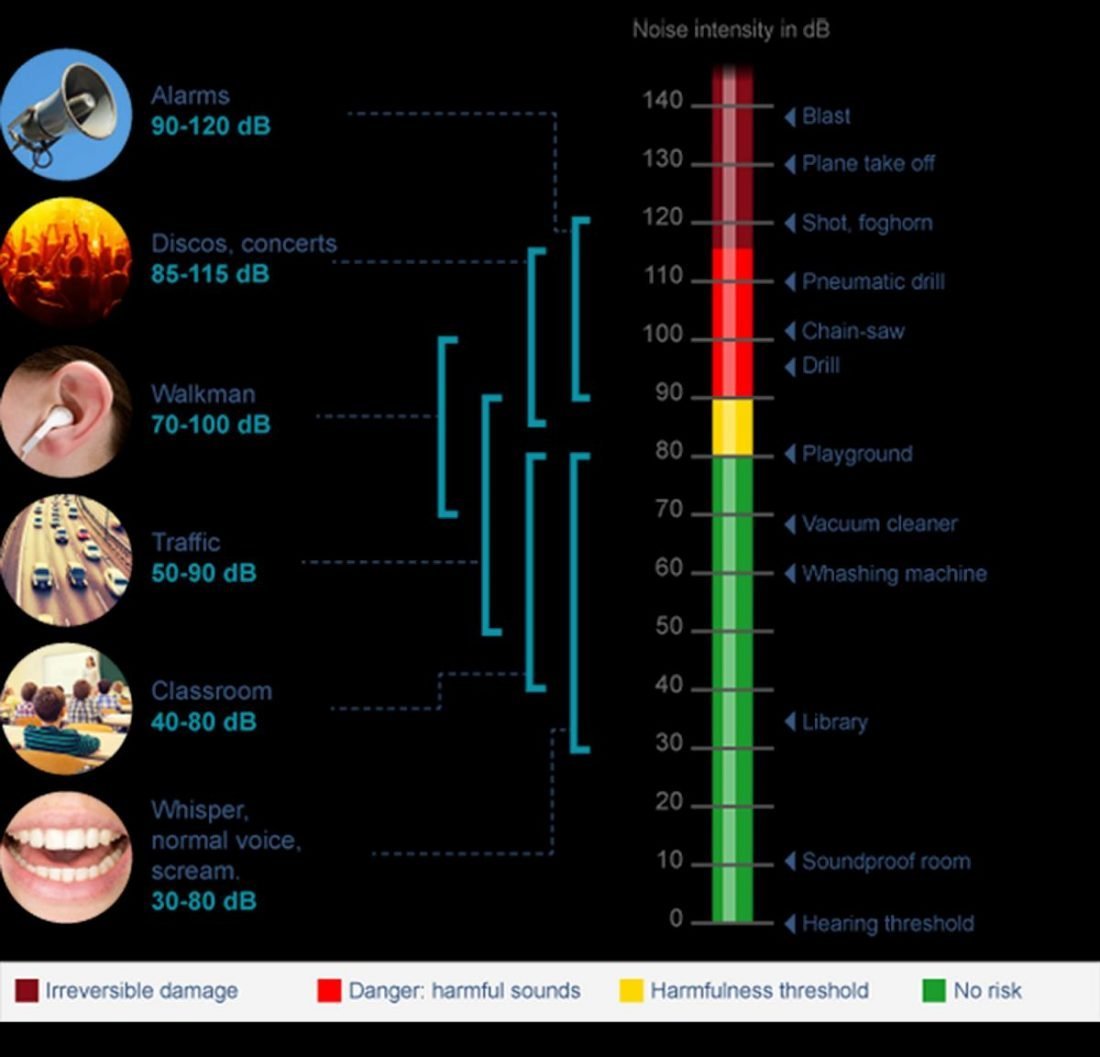
Volume levels, or sound pressure levels (SPL) are measured in dB SPL. That can be a difficult way to judge volume without a measuring device. The chart above gives some useful comparisons.
Luckily, there are also many apps available for mobile phones that allow you to measure the sound pressure in your location.
It is not just music and concerts, that can cause hearing damage. There are many situations in daily life when we are exposed to an unhealthy dose of volume.
Everyday Activities
- Music from phones, listening devices, hi-fi systems
- Music practice, either solo or with other musicians
- Fitness classes and gyms
- Children’s Toys
Events
- Concerts, restaurants, and bars
- Sports Events
- Cinema theaters
Tools, Machinery, and more
- Power Tools
- Kitchen appliances
- Sirens
- Firearms
You can’t stay in a soundproof bubble in an attempt to protect your hearing. What’s important to realize is that it’s all about exposure and awareness.
You can reduce your exposure by limiting the amount of time spent listening at a certain volume. If you are in control you can reduce the volume, if not you can use using hearing protection.
In the workplace, this is provided by law, when noise levels exceed a certain volume.
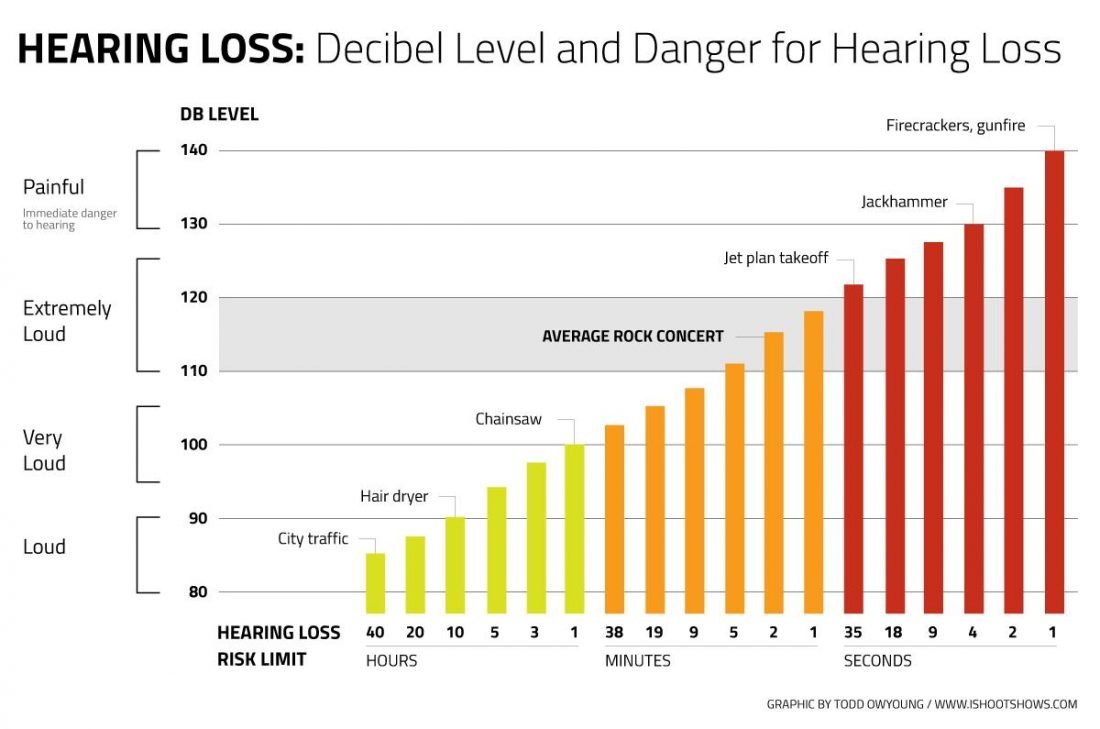
In your personal time, it is your responsibility to protect your own hearing. Like using sunscreen in the summer, it’s something you should have and use, without thinking.
Pleasure and Pain
The equal loudness curves show why we like loud music, the power and energy that affects our ears and body. Nothing beats that front-row seat at a concert or standing in front of a pounding sound system.
We have all experienced the sensation of our ears “ringing” after coming from a loud concert or club. Hopefully after a few hours, or the next morning the ringing has stopped. This is referred to as a temporary threshold shift.
It is not a healthy or normal effect, and you can take it as a warning that you have been damaging your hearing. It is the result of the hair cells on your basilar membrane being bent for a prolonged period, which take some time to recover.
If this listening behavior continues it can result in a permanent threshold shift, which is experienced as the condition tinnitus.
Your ear thinks you hear sound, particular frequencies, when you are not listening to anything. Hair cells are permanently bent and continue sending signals to the brain.
You can still hear, but the condition is very disturbing, and should be a concern. It is a sign that you need to drastically alter your listening habits or deafness will follow.
There are many options available to protect your hearing, and for every budget. From the simple foam type, to something more reusable and effective. For custom solutions, you can visit your local audiologist and get a set custom-made for your ears.
From the chart above, you can see that we are often only aware we are damaging our ears at very loud volumes, > 120 dB SPL. Hearing damage can occur well below this.
You should get your ears regularly tested, just like an eye exam, to make sure no damage has occurred and adjust your listening habits if any has.
With proper care and awareness, you can continue to enjoy listening to music now, and into the far future.
Conclusion
Hearing is something we take for granted. We begin doing it even before we leave the womb, after 18 weeks we can start to hear.
Whether marveling at the sounds of nature or the immersive life-altering power of music, our hearing mechanism is in motion.
Capturing vibrations from the air, and firing signals to our brain, it’s a precious gift. As such, we should give it our utmost respect, protect it and cherish it for the entirety of our lives.
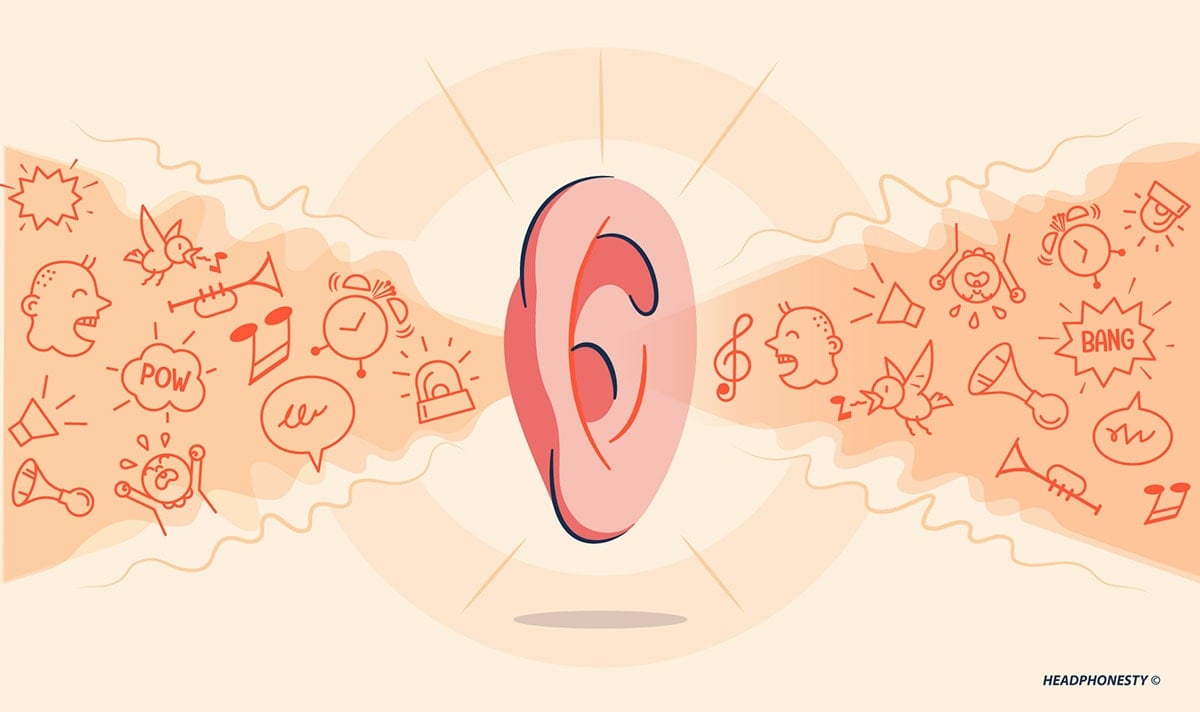
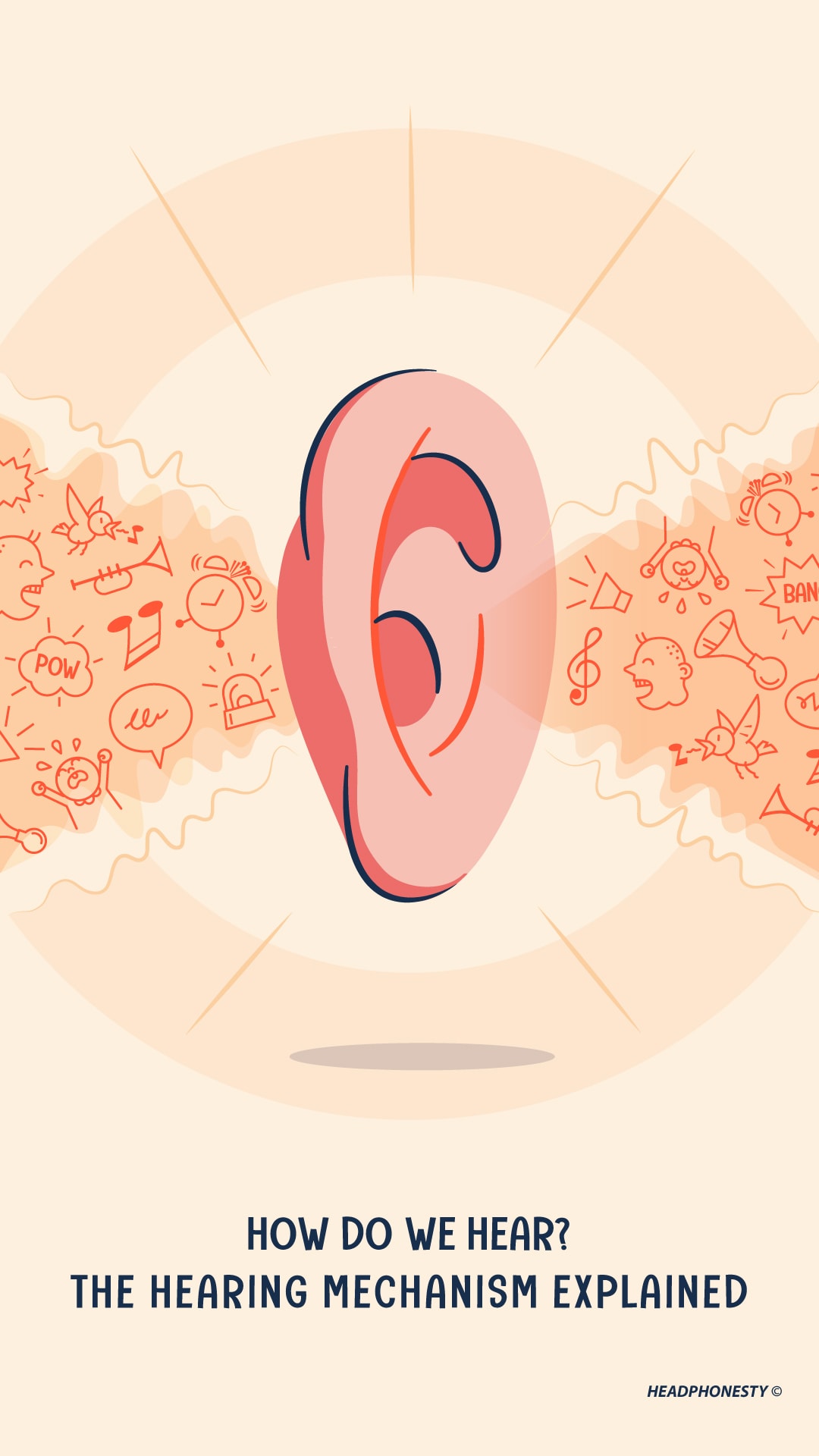
Big thanks, very good article. Since I suffer from tinnitus in one of my ears and often work around power tools, but enjoy good music reproduction and DIY audio it is easy to notice that with age noise exposure my hearing is not as accurate as when I was teenager (the brain compensates a little with age). Still, I try to enjoy my hobby, but be more careful with sound levels – no more boomy car stereos or other stupidities.